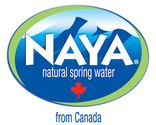|
|
|
The nine planetary boundaries
Stratospheric ozone layer
The stratospheric ozone layer in the atmosphere filters out ultraviolet (UV) radiation from the sun. If this layer decreases, increasing amounts of ultraviolet radiation will reach ground level. This can cause a higher incidence of skin cancer in humans as well as damage to terrestrial and marine biological systems. The appearance of the Antarctic ozone hole was proof that increased concentrations of anthropogenic ozone-depleting chemical substances, interacting with polar stratospheric clouds, had passed a threshold and moved the Antarctic stratosphere into a new regime. Fortunately, because of the actions taken as a result of the Montreal Protocol, we appear to be on the path that will allow us to stay within this boundary.
Biodiversity
The Millennium Ecosystem Assessment of 2005 concluded that changes in biodiversity due to human activities were more rapid in the past 50 years than at any time in human history, increasing the risks of abrupt and irreversible changes to ecosystems. The drivers of change that cause this severe biodiversity loss and lead to changes in ecosystem services are either steady, showing no evidence of declining over time, or are increasing in intensity. These large rates of ecosystem damage and extinction can be slowed by judicious projects to enhance habitat and improve build appropriate connectivity between ecosystems, while maintaining the high agricultural productivity that humanity needs. Further research is underway to determine whether a boundary based on extinction rates is sufficient, and to improve the availability of reliable data for use as the 'control variables' for this boundary.
Chemicals dispersion
Emissions of toxic compounds such as heavy metals, synthetic organic pollutants and radioactive materials, represent some of the key human-driven changes to the planetary environment. These compounds can persist in the environment for a very long time, and their effects are potentially irreversible. Even when the uptake and bio-accumulation of chemical pollution is at sub-lethal levels for organisms, the effects of reduced fertility and the potential of permanent genetic damage can have severe effects on ecosystems. For example, persistent organic compounds have caused dramatic reductions in bird populations and impaired reproduction and development in marine mammals. There are many examples of additive and synergic effects from these compounds, but these are still poorly understood scientifically. At present, we are unable to quantify the chemical pollution boundary, although the risk of crossing Earth system thresholds is considered sufficiently well-defined for it to be included in the list as a priority for further research.Climate Change
Recent evidence suggests that the Earth, now passing 387 ppmv CO2 in the atmosphere, has already transgressed the planetary boundary and is approaching several Earth system thresholds. We have reached a point at which the loss of summer polar sea-ice is almost certainly irreversible. This is one example of a well-defined threshold above which rapid physical feedback mechanisms can drive the Earth system into a much warmer state with sea levels metres higher than present. The weakening or reversal of terrestrial carbon sinks, for example through the ongoing destruction of the world's rainforests, is another potential tipping point, where climate-carbon cycle feedbacks accelerate Earth's warming and intensify the climate impacts. A major question is how long we can remain over this boundary before large, irreversible changes become unavoidable.
Ocean acidification
Around a quarter of the CO2 humanity emits into the atmosphere is ultimately dissolved in the oceans. Here it forms carbonic acid, altering ocean chemistry and decreasing the pH of the surface water. This increased acidity reduces the amount of available carbonate ions, an essential 'building block' used by many marine species for shell and skeleton formation. Beyond a threshold concentration, this rising acidity makes it hard for organisms such as corals and some shellfish and plankton species to grow and survive. Losses of these species would change the structure and dynamics of ocean ecosystems and could potentially lead to drastic reductions in fish stocks. Compared to pre-industrial times, surface ocean acidity has already increased by 30 percent. Unlike most other human impacts on the marine environment, which are often local in scale, the ocean acidification boundary has ramifications for the whole planet. It is also an example of how tightly interconnected the boundaries are, since atmospheric CO2 concentration is the underlying controlling variable for both the climate and the ocean acidification boundaries, although they are defined in terms of different Earth system thresholds.
Freshwater consumption and the global hydrological cycle
The freshwater cycle is strongly affected by climate change and its boundary is closely linked to the climate boundary, yet human pressure is now the dominant driving force determining the functioning and distribution of global freshwater systems. The consequences of human modification of water bodies include both global-scale river flow changes and shifts in vapour flows arising from land use change. These shifts in the hydrological system can be abrupt and irreversible. Water is becoming increasingly scarce - by 2050 about half a billion people are likely to be subject to water-stress, increasing the pressure to intervene in water systems. A water boundary related to consumptive freshwater use has been proposed to maintain the overall resilience of the Earth system and to avoid the risk of 'cascading' local and regional thresholds.
Land system change
Land is converted to human use all over the planet. Forests, wetlands and other vegetation types have primarily been converted to agricultural land. This land-use change is one driving force behind the serious reductions in biodiversity, and it has impacts on water flows and on the biogeochemical cycling of carbon, nitrogen and phosphorus and other important elements. While each incident of land cover change occurs on a local scale, the aggregated impacts can have consequences for Earth system processes on a global scale. A major challenge with setting a land use boundary is that it needs to reflect not just the absolute quantity of unconverted and converted land but also its function, quality and spatial distribution.
Nitrogen and phosphorus inputs to the biosphere and oceans
The biogeochemical cycles of nitrogen and phosphorus have been radically changed by humans as a result of many industrial and agricultural processes. Nitrogen and phosphorus are both essential elements for plant growth, so fertilizer production and application is the main concern. Human activities now convert more atmospheric nitrogen into reactive forms than all of the Earth's terrestrial processes combined. Much of this new reactive nitrogen is emitted to the atmosphere in various forms rather than taken up by plants. When it is rained out, it pollutes waterways and coastal zones or accumulates in the terrestrial biosphere. Similarly, a relatively small proportion of phosphorus fertilizers applied to food production systems is taken up by plants; much of the phosphorus mobilized by humans also ends up in aquatic systems. These can become oxygen-starved as bacteria consume the blooms of algae that grow in response to the high nutrient supply. A significant fraction of the applied nitrogen and phosphorus makes its way to the sea, and can push marine and aquatic systems across ecological thresholds of their own. One regional-scale example of this effect is the decline in the shrimp catch in the Gulf of Mexico's 'dead zone' caused by fertilizer transported in rivers from the US Midwest.
Atmospheric aerosol loading
An atmospheric aerosol planetary boundary was proposed primarily because of the influence of aerosols on Earth's climate system. Through their interaction with water vapour, aerosols play a critically important role in the hydrological cycle affecting cloud formation and global-scale and regional patterns of atmospheric circulation, such as the monsoon systems in tropical regions. They also have a direct effect on climate, by changing how much solar radiation is reflected or absorbed in the atmosphere. Humans change the aerosol loading by emitting atmospheric pollution (many pollutant gases condense into droplets and particles), and also through land-use change that increases the release of dust and smoke into the air. Shifts in climate regimes and monsoon systems have already been seen in highly polluted environments. A further reason for an aerosol boundary is that aerosols have adverse effects on many living organisms. Inhaling highly polluted air causes roughly 800,000 people to die prematurely each year. The toxicological and ecological effects of aerosols may thus relate to other Earth system thresholds. However, the behaviour of aerosols in the atmosphere is extremely complex, depending on their chemical composition and their geographical location and height in the atmosphere. While many relationships between aerosols, climate and ecosystems are well established, many causal links are yet to be determined. This means it has not been possible to set a specific threshold value at which global-scale effects will occur.
Stratospheric ozone layer
The stratospheric ozone layer in the atmosphere filters out ultraviolet (UV) radiation from the sun. If this layer decreases, increasing amounts of ultraviolet radiation will reach ground level. This can cause a higher incidence of skin cancer in humans as well as damage to terrestrial and marine biological systems. The appearance of the Antarctic ozone hole was proof that increased concentrations of anthropogenic ozone-depleting chemical substances, interacting with polar stratospheric clouds, had passed a threshold and moved the Antarctic stratosphere into a new regime. Fortunately, because of the actions taken as a result of the Montreal Protocol, we appear to be on the path that will allow us to stay within this boundary.
Biodiversity
The Millennium Ecosystem Assessment of 2005 concluded that changes in biodiversity due to human activities were more rapid in the past 50 years than at any time in human history, increasing the risks of abrupt and irreversible changes to ecosystems. The drivers of change that cause this severe biodiversity loss and lead to changes in ecosystem services are either steady, showing no evidence of declining over time, or are increasing in intensity. These large rates of ecosystem damage and extinction can be slowed by judicious projects to enhance habitat and improve build appropriate connectivity between ecosystems, while maintaining the high agricultural productivity that humanity needs. Further research is underway to determine whether a boundary based on extinction rates is sufficient, and to improve the availability of reliable data for use as the 'control variables' for this boundary.
Chemicals dispersion
Emissions of toxic compounds such as heavy metals, synthetic organic pollutants and radioactive materials, represent some of the key human-driven changes to the planetary environment. These compounds can persist in the environment for a very long time, and their effects are potentially irreversible. Even when the uptake and bio-accumulation of chemical pollution is at sub-lethal levels for organisms, the effects of reduced fertility and the potential of permanent genetic damage can have severe effects on ecosystems. For example, persistent organic compounds have caused dramatic reductions in bird populations and impaired reproduction and development in marine mammals. There are many examples of additive and synergic effects from these compounds, but these are still poorly understood scientifically. At present, we are unable to quantify the chemical pollution boundary, although the risk of crossing Earth system thresholds is considered sufficiently well-defined for it to be included in the list as a priority for further research.Climate Change
Recent evidence suggests that the Earth, now passing 387 ppmv CO2 in the atmosphere, has already transgressed the planetary boundary and is approaching several Earth system thresholds. We have reached a point at which the loss of summer polar sea-ice is almost certainly irreversible. This is one example of a well-defined threshold above which rapid physical feedback mechanisms can drive the Earth system into a much warmer state with sea levels metres higher than present. The weakening or reversal of terrestrial carbon sinks, for example through the ongoing destruction of the world's rainforests, is another potential tipping point, where climate-carbon cycle feedbacks accelerate Earth's warming and intensify the climate impacts. A major question is how long we can remain over this boundary before large, irreversible changes become unavoidable.
Ocean acidification
Around a quarter of the CO2 humanity emits into the atmosphere is ultimately dissolved in the oceans. Here it forms carbonic acid, altering ocean chemistry and decreasing the pH of the surface water. This increased acidity reduces the amount of available carbonate ions, an essential 'building block' used by many marine species for shell and skeleton formation. Beyond a threshold concentration, this rising acidity makes it hard for organisms such as corals and some shellfish and plankton species to grow and survive. Losses of these species would change the structure and dynamics of ocean ecosystems and could potentially lead to drastic reductions in fish stocks. Compared to pre-industrial times, surface ocean acidity has already increased by 30 percent. Unlike most other human impacts on the marine environment, which are often local in scale, the ocean acidification boundary has ramifications for the whole planet. It is also an example of how tightly interconnected the boundaries are, since atmospheric CO2 concentration is the underlying controlling variable for both the climate and the ocean acidification boundaries, although they are defined in terms of different Earth system thresholds.
Freshwater consumption and the global hydrological cycle
The freshwater cycle is strongly affected by climate change and its boundary is closely linked to the climate boundary, yet human pressure is now the dominant driving force determining the functioning and distribution of global freshwater systems. The consequences of human modification of water bodies include both global-scale river flow changes and shifts in vapour flows arising from land use change. These shifts in the hydrological system can be abrupt and irreversible. Water is becoming increasingly scarce - by 2050 about half a billion people are likely to be subject to water-stress, increasing the pressure to intervene in water systems. A water boundary related to consumptive freshwater use has been proposed to maintain the overall resilience of the Earth system and to avoid the risk of 'cascading' local and regional thresholds.
Land system change
Land is converted to human use all over the planet. Forests, wetlands and other vegetation types have primarily been converted to agricultural land. This land-use change is one driving force behind the serious reductions in biodiversity, and it has impacts on water flows and on the biogeochemical cycling of carbon, nitrogen and phosphorus and other important elements. While each incident of land cover change occurs on a local scale, the aggregated impacts can have consequences for Earth system processes on a global scale. A major challenge with setting a land use boundary is that it needs to reflect not just the absolute quantity of unconverted and converted land but also its function, quality and spatial distribution.
Nitrogen and phosphorus inputs to the biosphere and oceans
The biogeochemical cycles of nitrogen and phosphorus have been radically changed by humans as a result of many industrial and agricultural processes. Nitrogen and phosphorus are both essential elements for plant growth, so fertilizer production and application is the main concern. Human activities now convert more atmospheric nitrogen into reactive forms than all of the Earth's terrestrial processes combined. Much of this new reactive nitrogen is emitted to the atmosphere in various forms rather than taken up by plants. When it is rained out, it pollutes waterways and coastal zones or accumulates in the terrestrial biosphere. Similarly, a relatively small proportion of phosphorus fertilizers applied to food production systems is taken up by plants; much of the phosphorus mobilized by humans also ends up in aquatic systems. These can become oxygen-starved as bacteria consume the blooms of algae that grow in response to the high nutrient supply. A significant fraction of the applied nitrogen and phosphorus makes its way to the sea, and can push marine and aquatic systems across ecological thresholds of their own. One regional-scale example of this effect is the decline in the shrimp catch in the Gulf of Mexico's 'dead zone' caused by fertilizer transported in rivers from the US Midwest.
Atmospheric aerosol loading
An atmospheric aerosol planetary boundary was proposed primarily because of the influence of aerosols on Earth's climate system. Through their interaction with water vapour, aerosols play a critically important role in the hydrological cycle affecting cloud formation and global-scale and regional patterns of atmospheric circulation, such as the monsoon systems in tropical regions. They also have a direct effect on climate, by changing how much solar radiation is reflected or absorbed in the atmosphere. Humans change the aerosol loading by emitting atmospheric pollution (many pollutant gases condense into droplets and particles), and also through land-use change that increases the release of dust and smoke into the air. Shifts in climate regimes and monsoon systems have already been seen in highly polluted environments. A further reason for an aerosol boundary is that aerosols have adverse effects on many living organisms. Inhaling highly polluted air causes roughly 800,000 people to die prematurely each year. The toxicological and ecological effects of aerosols may thus relate to other Earth system thresholds. However, the behaviour of aerosols in the atmosphere is extremely complex, depending on their chemical composition and their geographical location and height in the atmosphere. While many relationships between aerosols, climate and ecosystems are well established, many causal links are yet to be determined. This means it has not been possible to set a specific threshold value at which global-scale effects will occur.
|
|






